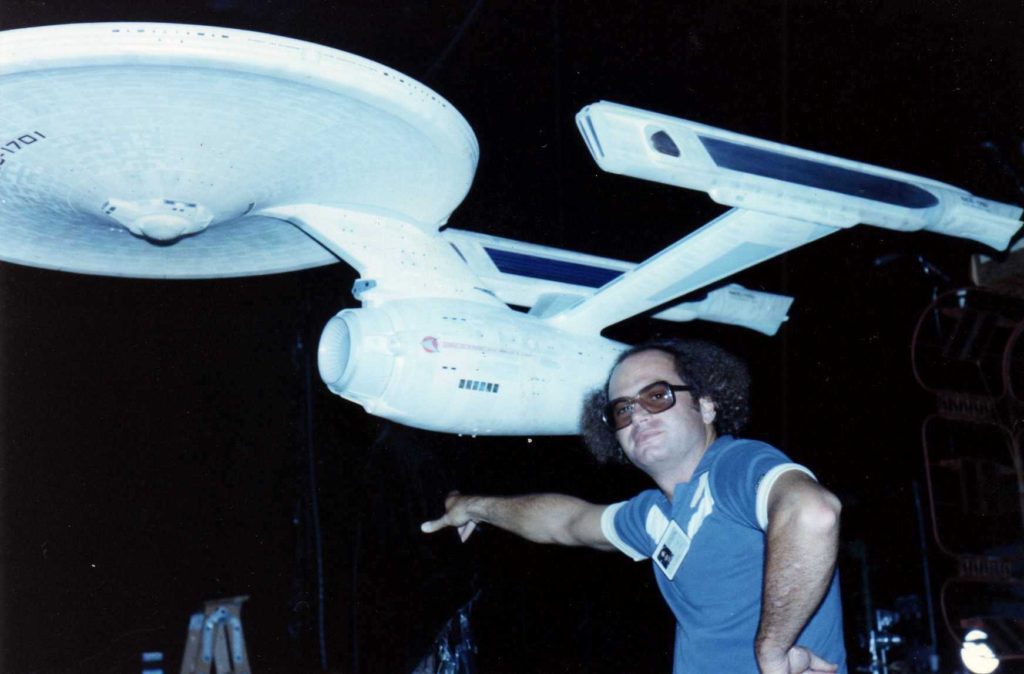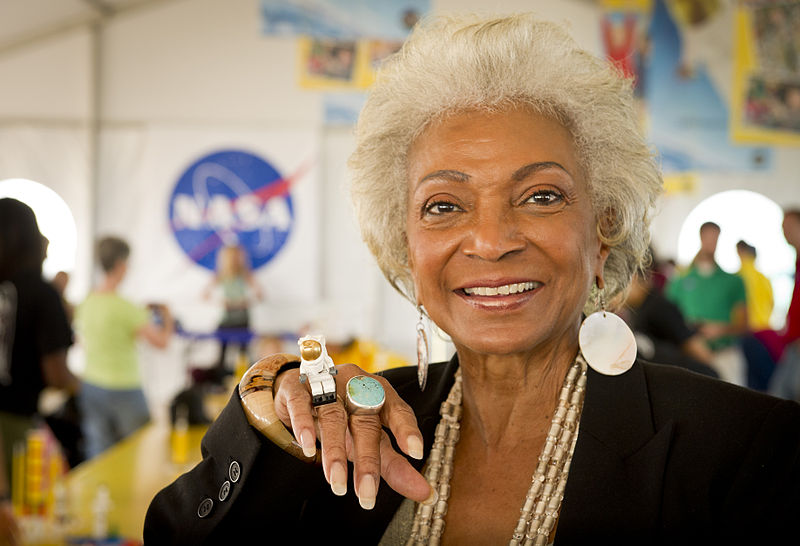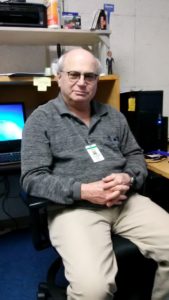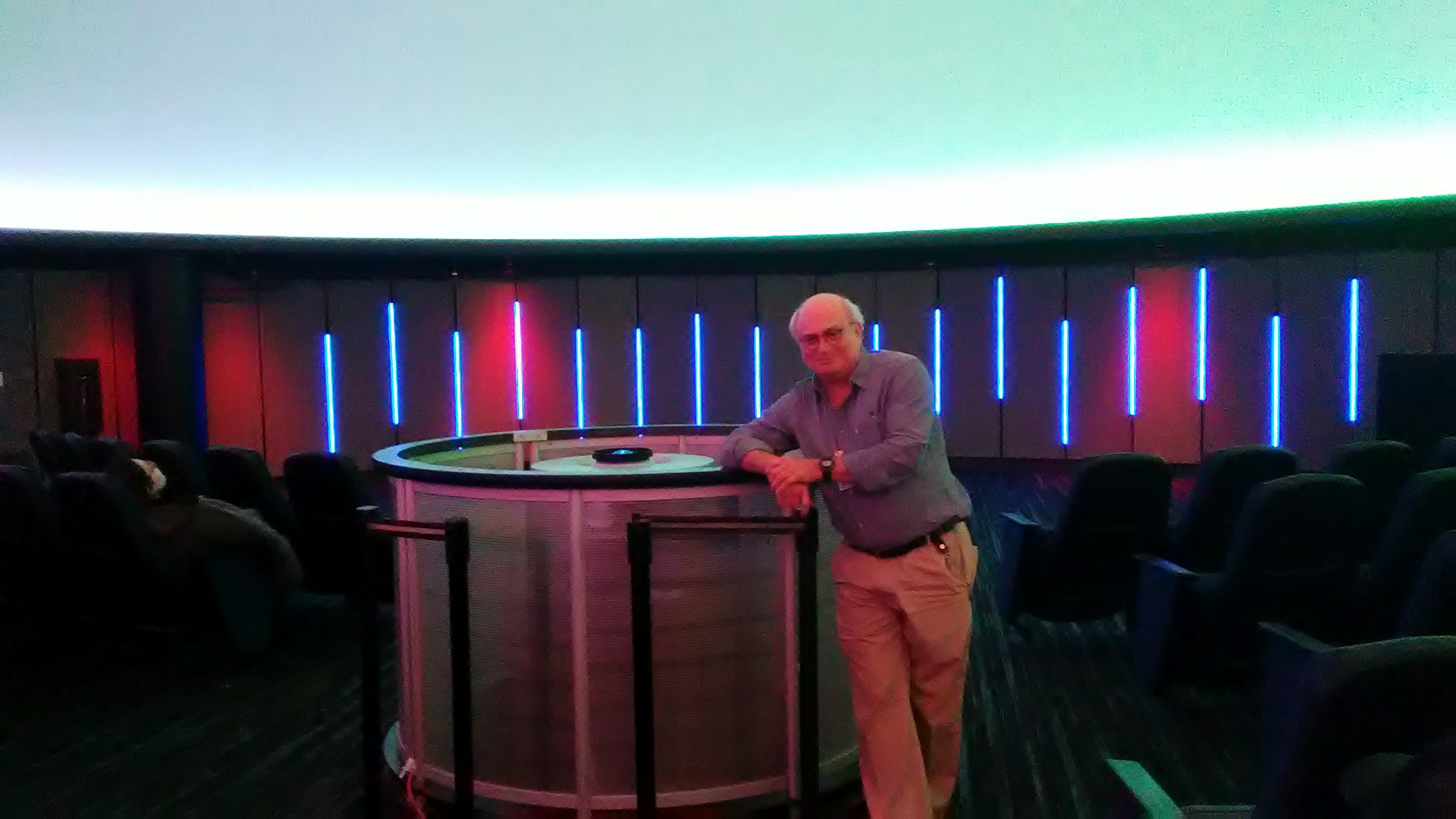Star Trek’s Captain Kirk, Dr. Spock and Scotty were some of the faces on the front end of Star Trek’s franchise but Bob Friedstand was on the back end of the makings of the Star Trek Legacy. Friedstand sat down with me to discuss how Star Trek: the Motion Picture was developed and the controversy surrounding interracial dating scenes in the 1960s.

Star Trek: the Movie 1979. Courtesy of Bob Friedstand
Deep Space in Memphis
What is your job position at The Pink Palace?
I do in-house videos for promotions at The Pink Palace Family of Museums and am one of the digital technicians for the Planetarium. I worked the CTI Theater (formerly IMAX) until they changed it to digital. When Wesley (a former supervisor) moved me to the Planetarium, they called me a Digital Technician because he anticipated that the museum was going to have more and more need for digital content like videos and exhibits.
So how long have you been working for The Pink Palace?
I’ve been working in the Pink Palace since February 1995 when I was a part-time projectionist when it was called IMAX before it was digital. I’ve been working in the Planetarium for 3-4 years. I run the Planetarium shows twice a week, do commercial videos for marketing and in-house promotions like trailers.
Star Wars to Star Trek
I see that you have done work outside of The Pink Palace Museum, like your history with the Star Trek Movie in 1978-79.
Well, Star Wars (the movie) had just hit. That really started the ball rolling on these big time science fiction and special effects movies. Star Trek was a real special thing because the TV shows (1966-69) had been off the air for over 10 years. So now they are making a full length movie with the original cast. Yeah, it was a real big deal.

Star Trek Talks in 2017. Courtesy of Bob Friedstand
I’m from Memphis. There was a company Downtown called Motion Picture Laboratory. This was one of the few film laboratories with 16mm film in the country. We had all kind of different services. It took a lot of different type to put a film together.
I worked in the department they called Optical Printing. Optical Printing was really a main stay of special effects. After working there for 7 years, I decided to send some resumes out to Hollywood. Star Wars just hit and I thought that this was a good time for this type of work. Optical printing was part of special effects. So I moved out there (Hollywood).
I got a job with another couple of companies (in Hollywood) for about a year and a half. Then I read that they were looking for people at Star Trek (the movie). I applied for that. They were really in need of people who knew (film) and they were on a deadline. They hired me to help. I worked on one of the cameras called down shooters. They shoot down on the table and (display) artwork. So we shot a lot of star backgrounds. We did all the computer read outs in the film, back then, it was done with animated artwork. So that was all shot on my camera along with three other people (cameramen) who worked on it, too. We had a couple of those cameras, so yeah, it was amazing.
So was this in Los Angeles?
The facility (studio) itself was in Marina Del Rey. It was one of the coastal places outside of Los Angeles.
So what building was it in?
A non-descript industrial building. A lot of companies do that. They’ll rent a huge, empty building and section it off. All the models where built in that building for the Star Trek Enterprise. Back then it was physical models. The only use for computers back then was to drive the cameras back and forth.
So there were actually computers in 1978?
Things in big racks.. nothing that can generate an image. The computer read outs, which would be done on a computer today, were all animated artwork that was shot frame by frame.
So those were the things that you were in control of at the time? The artwork? Shooting frame by frame?
I was in control of shooting the artwork. The artwork itself was created by the arts department, a bunch of (artists) kids. There was a fellow name Bob (Robert) Swarthe who had worked on Close Encounters (the movie) did all the animation of the mothership, the flashing lights and stuff. He was in charge of designing everything. Some people did the design, created the artwork and stuff, then there were photographers like me that actually shot this stuff. It was all specialized. That’s just the way that it used to be done with film.
The Star Trek Crew
So how was it working with Mr. Spock?
I didn’t really work with any of the actors. The special effects stuff was all done after the principle photography, however, a couple of days they had to shoot some scenes with William Shatner and Leonard Nimoy. It was a scene where they had them floating out in space and they hadn’t shot that so they brought them in one of the areas that I worked. They had a helmet that was fixed in placed and they got in a chair to (shot the scene). They would stick their head in the helmet (and sit in the chairs) because all they need was a shot of the helmet for that particular scene. I worked closely with the operating director from the Union (SAG) and watched other scenes be shot.

Nichelle Nichols. Year 2010. Courtesy of NASA/Bill Ingalls
The thrill for me was that this was the same place they had done (filmed) Close Encounters of the Third Kind (movie). I was a big fan of this stuff before I moved out there (Hollywood), so I knew all the names of the people that were still there working on Star Trek. So I got to meet them and work with them. It was wonderful.
So was this the first original Star Trek movie?
This was the first Star Trek feature film that started the franchise of Star Trek Series until this day.
Yeah, to be a part of that history at the beginning was amazing…
It was wonderful to be a part of a featured movie.
[Star Trek Crew Talks, 2013. Video courtesy of The Discovery Channel UK]
Political and Racial Activism at Star Trek and in the Streets
So were there shows before Star Trek the Movie 1979?
Oh yeah, there were a whole TV series (beginning 1966-69) that lasted a couple years. It was real popular but they took it off the air. There weren’t many science fiction shows back then so it was a very serious show that was political and (addressed) racial issues. They used aliens to illustrate what was happening in the world. People just loved William Shatner, Leonard Nimoy, Leonard McCoy the fellow that played Dr. Bones and Scotty the Engineer (actor James Doohan). There was a black lady (Nichelle Nichols) who was one of the crew members. There was a scene where William Shatner and (Nichols) kissed, so it was real controversial in the 1960s.
“Star Trek caused controversy in 1960s America by having a black actress in a major role, for the creators though, this made them want to take things even further, with Captain Kirk and Lieutenant Uhura sharing the first interracial kiss on screen,” according to The Discovery Channel UK.
That’s what I liked about Sci Fi. Even The Twilight Zone (show) touched on issues of race and politics. Shows like that including Star Trek created a huge fanbase that something else was outside this world. It opened up minds that we are the same (human) yet different, too. That’s what I liked about Star Trek and Twilight Zone. I like Sci Fi.
Yeah, people that watch something especially like Star Trek got interested in science. They later became astronomers and people that work for NASA that got inspired by that stuff so yeah science fiction.. yeah.

The Pink Palace Museum, Year 2018. Courtesy of Bob Friedstand
So after Star Trek, what other (projects) did you do?
After Star Trek, I moved back to Memphis then I was asked to come back to L.A. in 1983 to do the main titles and graphic work on the first Terminator movie. I was actually working for this little company called AniMagic. We did a lot of commercials in that place. I worked at some small companies that were called on to do graphic works for these kinds of movies. Everything that needed to be created for a featured movie was created inside a studio that had different departments. I worked for a company called Modern Film Effects. You see these creds on earlier TV shows like 70s and 80s. With Star Trek the Movie, it was Maxella with Douglas Trumbull but Star Trek was owned by Paramount. Right now, I am working with film directors Chad (Barton) and Rachel (Taylor) on a few indie movies. I’m really grateful that at my age I’m able to continue working in film.
What are your views on space?
I’ve always been a fan of astronomy. Since I’ve worked at the Planetarium, I’ve learned a lot more. Science is my religion. The infinity of space is hard to put into words. I’m confident that we are going to find other life out there (in the world). It’s just awesome to me. I think that it’s real important that we keep doing what we are doing with the space programs. The Earth is not going to last forever. It’s going to take a billion years or so. It’s just a natural thing in space. Stars die and that means the planet is going to die. At some point, we are going to need a place to go. If we (humanity) survive.

The Pink Palace Museum, Year 2018. Courtesy of Bob Friedstand
Are there any words of wisdom to become a digital visual technicians and special effects graphic photographer? Live, long and prosper? Hahaha!
May the force be with you. I feel very fortunate. This is something that I grew up really being interested in like special effects and movie making. I’ve always been interested in it. I have done this throughout my life. If you are fortunate to know what you want to do when you are young, do it. Whatever you are interested in, concentrate. Learn as much as you can and do the best you can.






